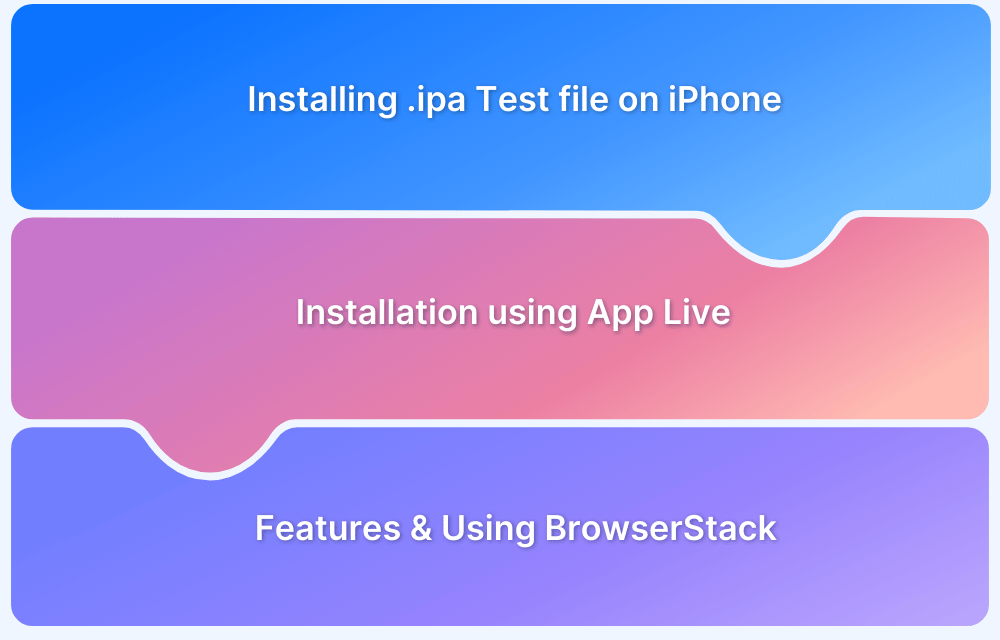Selenium RC was an early web automation tool that used a server to inject commands. It’s now outdated, with WebDriver offering a faster, simpler alternative.
Overview
Selenium RC (Remote Control) is a testing framework that uses a server to inject JavaScript into browsers for automation. It has been replaced by Selenium WebDriver, a modern tool that interacts directly with browsers using native commands for faster and more reliable automation.
Why WebDriver is a better choice:
- Direct communication with the browser
- Better compatibility with modern web standards
- Actively maintained and widely adopted
This article explores the key differences between Selenium Remote Control (RC) and Selenium WebDriver. It also gives a glimpse of how Selenium WebDriver changed the testing landscape by overcoming the limitations one would encounter in Selenium RC.
What is Selenium RC?
Selenium RC is an important component in the Selenium test suite. It is a testing framework that enables a QA or a developer to write test cases in any programming language in order to automate UI tests for web applications against any HTTP website.
Selenium RC comprises of two parts:
- Client libraries for the preferred computer language
- A server that launches and kills browsers automatically
Refer to the image below for a simplified architectural representation of the structure
Image source: Seleniumhq
Selenium RC’s architecture has proven to be complicated for the following reasons:
- One needs to install and launch a separate application called Selenium Remote Control Server before running test scripts
- The RC server acts as a mediator between the browser and Selenium commands
The following operations are performed behind the scenes when a test script is executed in Selenium RC:
- The RC server injects a Javascript program known as Selenium Core into the browser
- Once the Selenium Core program is injected, it starts receiving instructions from the RC server based on test scripts
Selenium Core executes all these instructions as JavaScript commands - The web browser executes all the commands given by Selenium Core and returns the test summary back to the server
Limitations of Selenium RC:
- Complicated Architecture
- Execution of test scripts is time-consuming as Selenium RC uses JavaScript commands as instructions to the browser. This results in slow performance
- API’s are less object-oriented
- No support for Headless HTMLUnit browsers (Invisible browser)
The limitations of Selenium RC led to the development of the new automation framework, Selenium WebDriver. After the introduction of WebDriver in 2006, complications arising in RC could be addressed and resolved.
Read More: Selenium Grid Tutorial : How to Set It Up
How WebDriver took over Selenium RC?
Selenium WebDriver’s architecture is much simpler than Selenium RC. Unlike RC, it does not rely on a proxy server but interacts directly with the browser at the OS level. This eliminates layers of complexity and improves speed and reliability.
To run test scripts on WebDriver, you only need:
- An IDE (Integrated Development Environment) to write code in your preferred language
- A web browser to perform the test
BrowserStack supports Selenium WebDriver, enabling you to run tests across real devices and browsers in the cloud with ease.
What makes WebDriver the better choice?
Selenium WebDriver offers a more efficient, scalable, and modern approach to browser automation compared to Selenium RC. Here’s why it stands out:
- Direct Browser Communication: WebDriver interacts directly with the browser using native commands, eliminating the need for a middleman server like in Selenium RC.
- Faster Execution: Without the proxy server layer, tests run faster and more reliably.
- Simpler Architecture: The reduced complexity means easier debugging, maintenance, and setup.
- Better Browser Support: WebDriver is compatible with the latest browsers and web standards.
- Cross-Language Support: Allows scripting in multiple programming languages like Java, Python, C#, Ruby, etc.
- Wider Adoption: WebDriver is the current W3C standard for browser automation and is supported by tools and platforms across the industry.
- Cloud Testing Compatibility: Services like BrowserStack Automate integrate seamlessly with WebDriver, enabling scalable, real-device testing in the cloud.
These advantages make WebDriver the go-to choice for modern, robust test automation frameworks.
Why Choose BrowserStack to Run Selenium WebDriver Tests
BrowserStack is a leading cloud testing platform that complements Selenium WebDriver by offering a powerful, scalable, and hassle-free testing environment. Here’s why it’s the preferred choice:
- Real Devices & Browsers: Test on 3500+ real devices and browsers to ensure accurate results across platforms.
- No Setup Required: Skip the headache of maintaining infrastructure. BrowserStack provides instant access to testing environments.
- Parallel Testing: Run multiple WebDriver tests simultaneously to speed up test cycles and reduce feedback time.
- Seamless CI/CD Integration: Easily integrates with popular CI tools like Jenkins, GitHub Actions, CircleCI, and more.
- Debugging Made Easy: Get detailed logs, screenshots, and video recordings of test sessions to quickly identify issues.
- Global Infrastructure: Fast and reliable test execution from multiple locations worldwide.
With BrowserStack Automate, teams can fully leverage Selenium WebDriver’s capabilities at scale, ensuring high-quality software delivery across all user environments.
Conclusion
Selenium WebDriver has clearly emerged as the superior choice over Selenium RC due to its simplified architecture, faster execution, and direct browser interaction. Its ability to support modern web standards and integration with a wide range of tools makes it ideal for today’s testing needs.
Platforms like BrowserStack Automate further enhance its capabilities by providing a reliable, scalable environment to run Selenium WebDriver tests on real browsers and devices, without the overhead of managing infrastructure. For teams seeking efficient, accurate, and scalable test automation, WebDriver combined with BrowserStack is the way forward.







